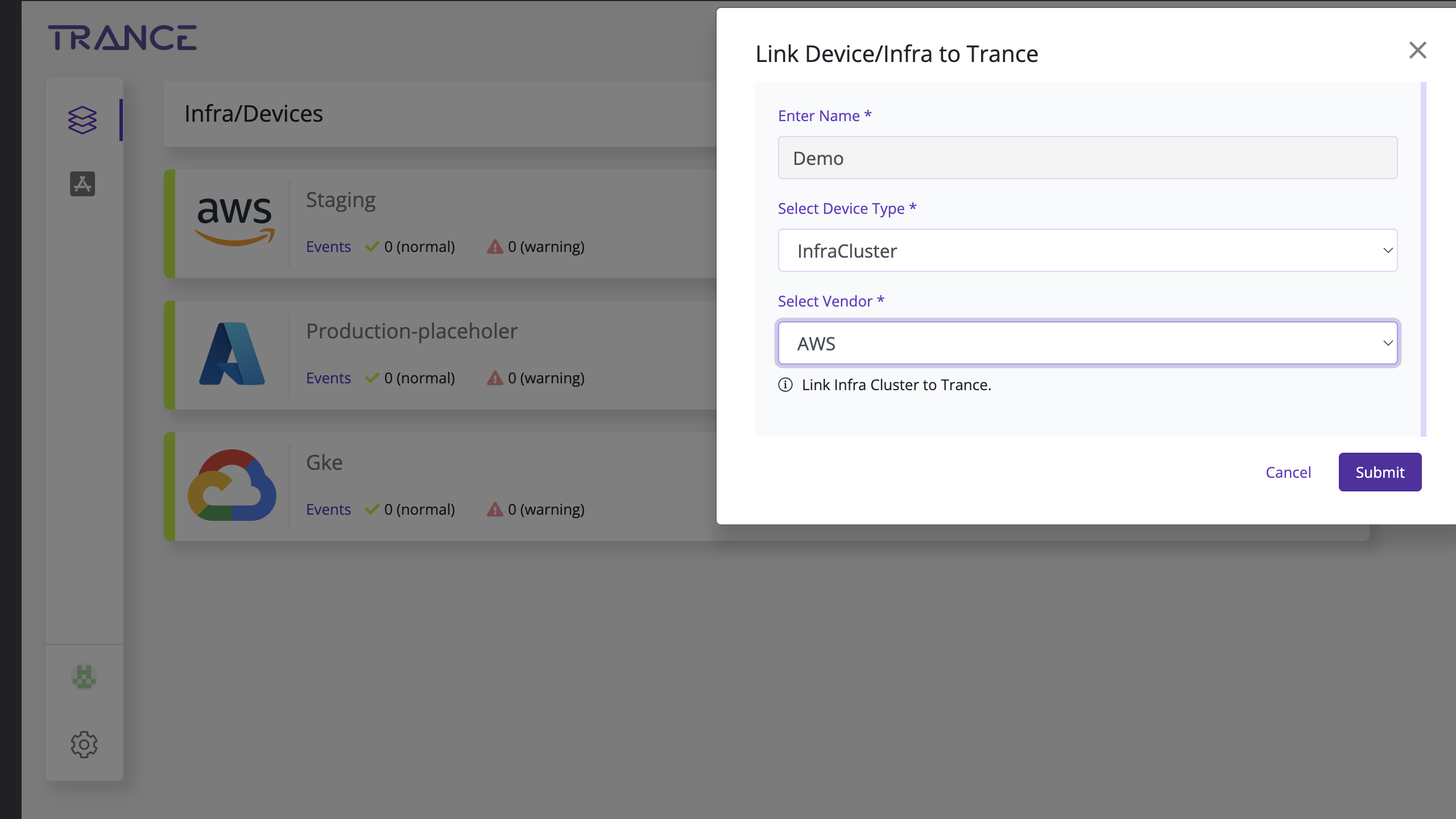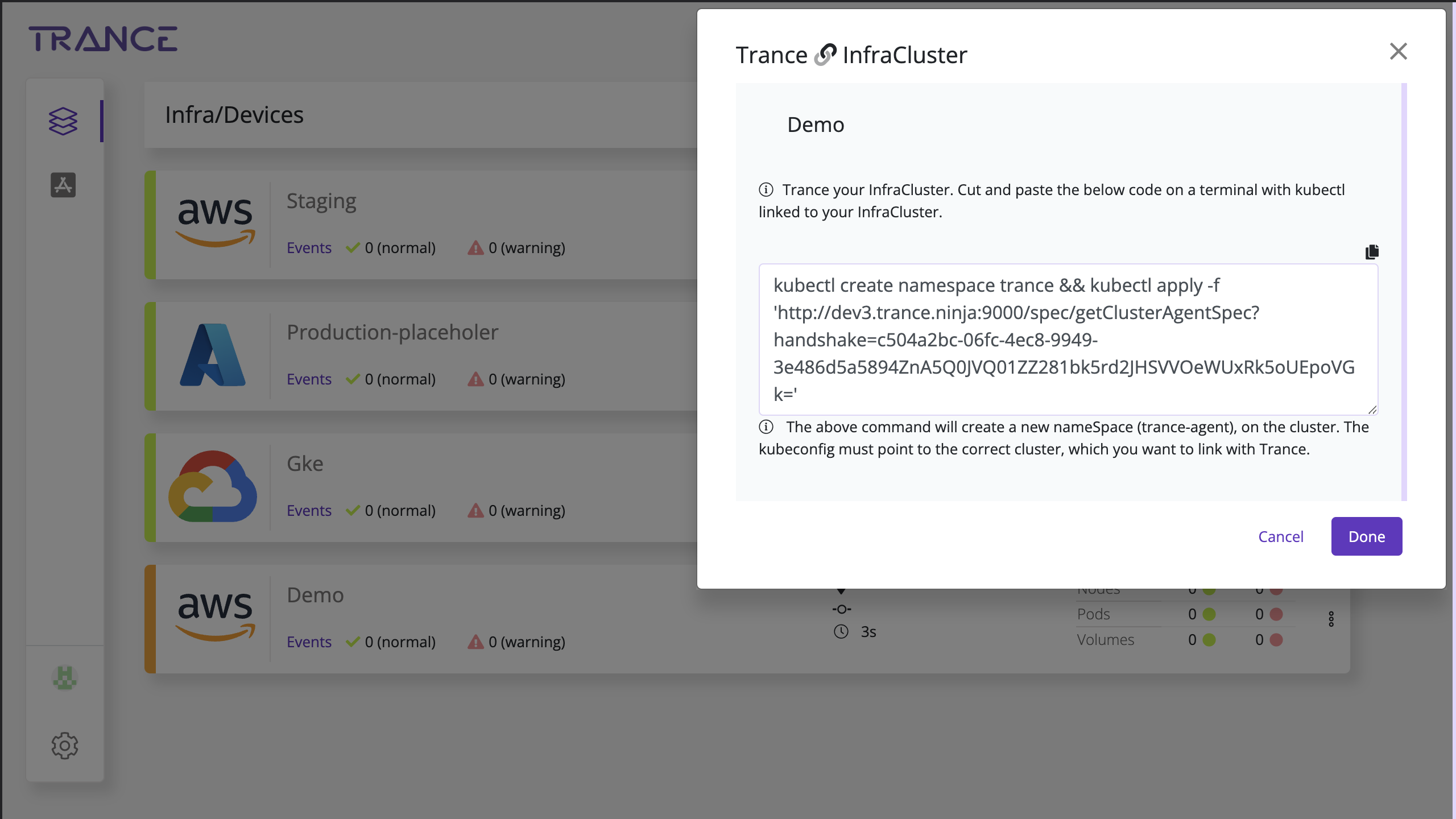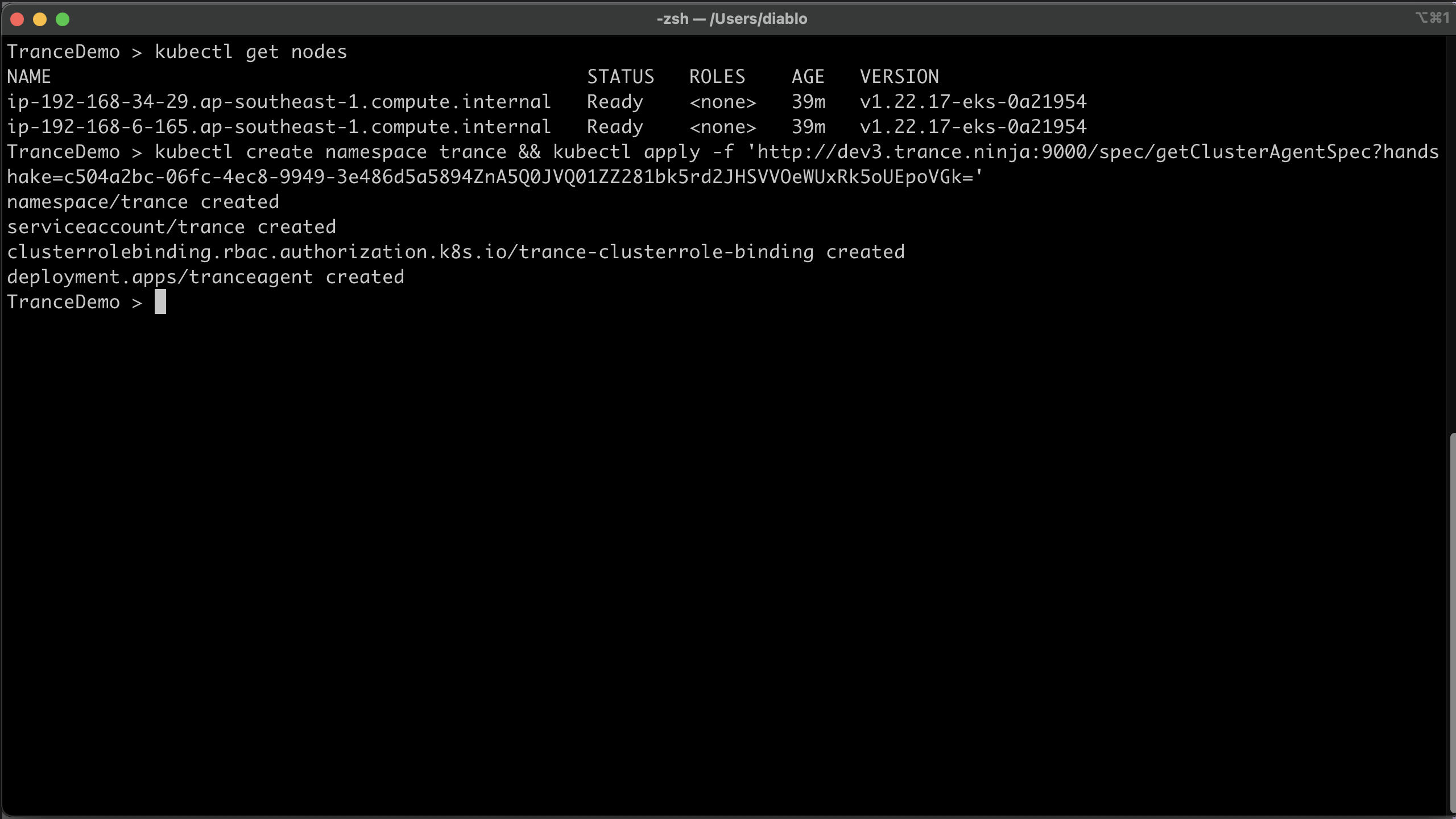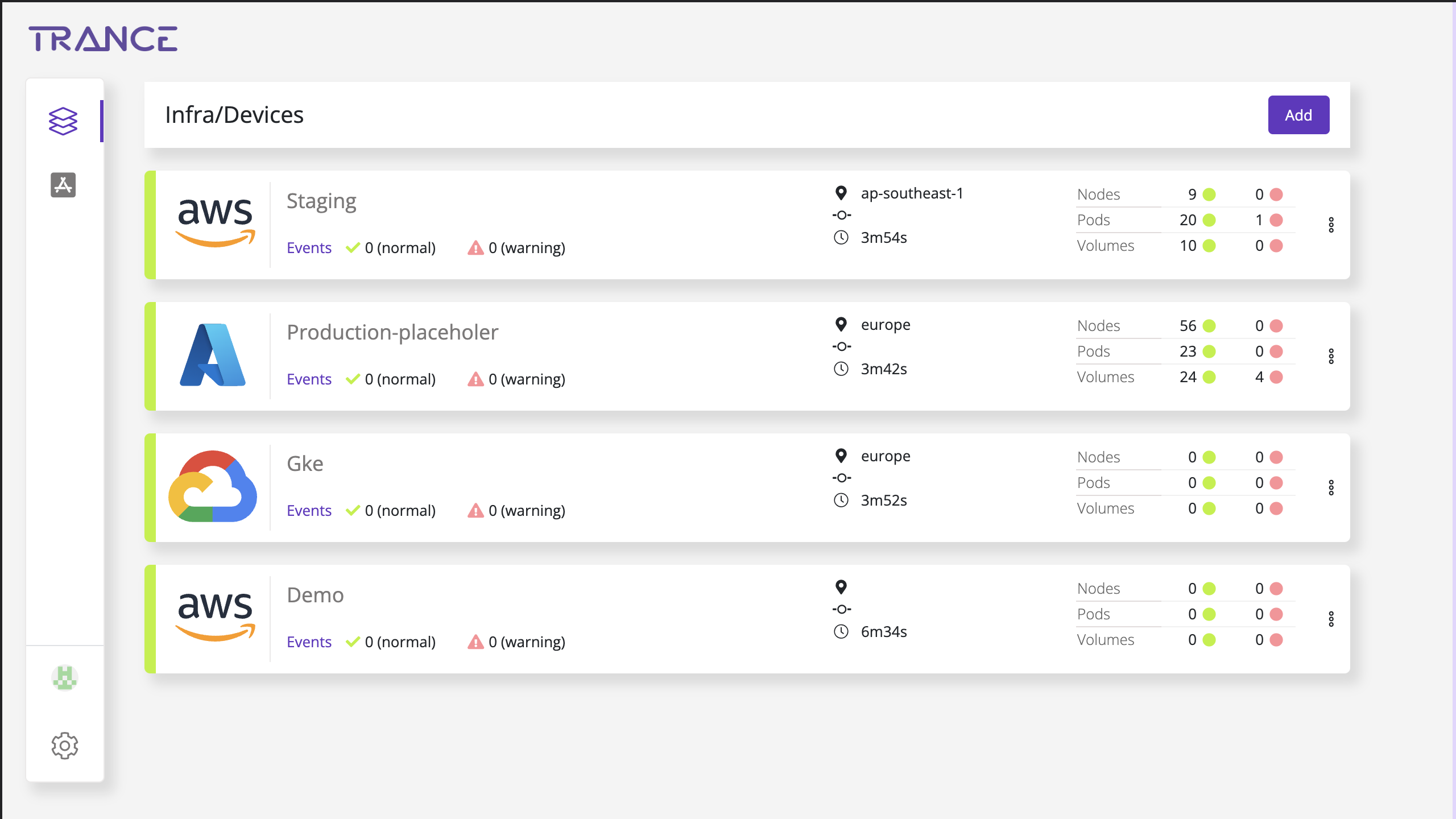Link Cluster
Link a cluster on any vendor platform to Trance
Clusters can either be provisioned using Trance. Existing clusters managed on other cloud platforms can be managed using Trance, by linking same with Trance.1
When using this feature, Trance works on the Kubernetes layer. Trance provides a UI layer to all the functionality exposed via kubectl cli.
To link an existing cluster to trance, follow the below steps.
-
Click on the Add button on the Trance Dashboard
-
Above action opens a modal (screen overlay) with a form
-
On the form, enter the details of the cluster to be linked
- Enter the name of the cluster to be linked 2
- Select InfraCluster from the Select Device Type dropdown
- Select the platform/vendor where the cluster is provisioned from the Select Vendor dropdown
-
Click on Submit, once the form is filled

Link a kubernetes cluster to Trance
-
Copy the kubectl command from the next screen prompt
-
Run this command on a terminal, select the correct cluster with kubectl before running this command 3

Obtain the kubectl command to install the Trance Agent
-
Verify that the correct cluster is selected using kubectl
-
Run the copied command from Trance onto the terminal
-
Provisioning of the Trance Agent will start
- A new namespace Trance is created
- Trance Agent will run as a pod in this namespace
_ The namespace name cannot be altered
_ A service account Trance is created
_ A cluster role binding is created to give access to the Agent on all namespaces and objects
_ The cluster role binding can be modified to restrict access to the Trance Agent

Run the Trance agent provision command
-
On the Trance Dashboard the status of the newly linked cluster will change from orange to green
-
The node/volume/pod status will update after some time (about 3-10 minutes), post a link establishment between the Trance Agent and Trance SAAS

Track link status and cluster status on Trance Dashboard
-
This cluster needs to be already provisioned on the vendor/platform of your choice, Trance also supports OnPrem kubernetes clusters ↩︎
-
This need not be the name given to the cluster on the actual platform, this is used to reference the cluster on Trance Dashboard ↩︎
-
Multiple clusters can be managed using kubectl, please select the right cluster before running the agent installation command ↩︎